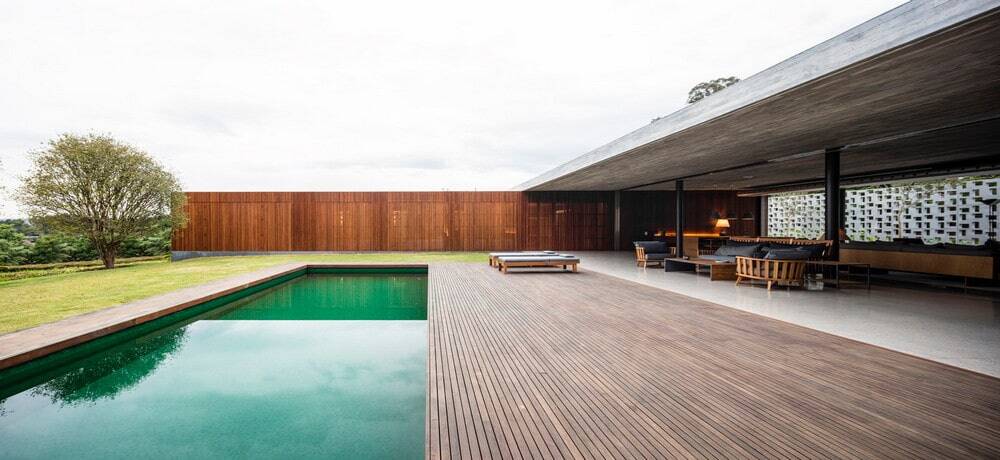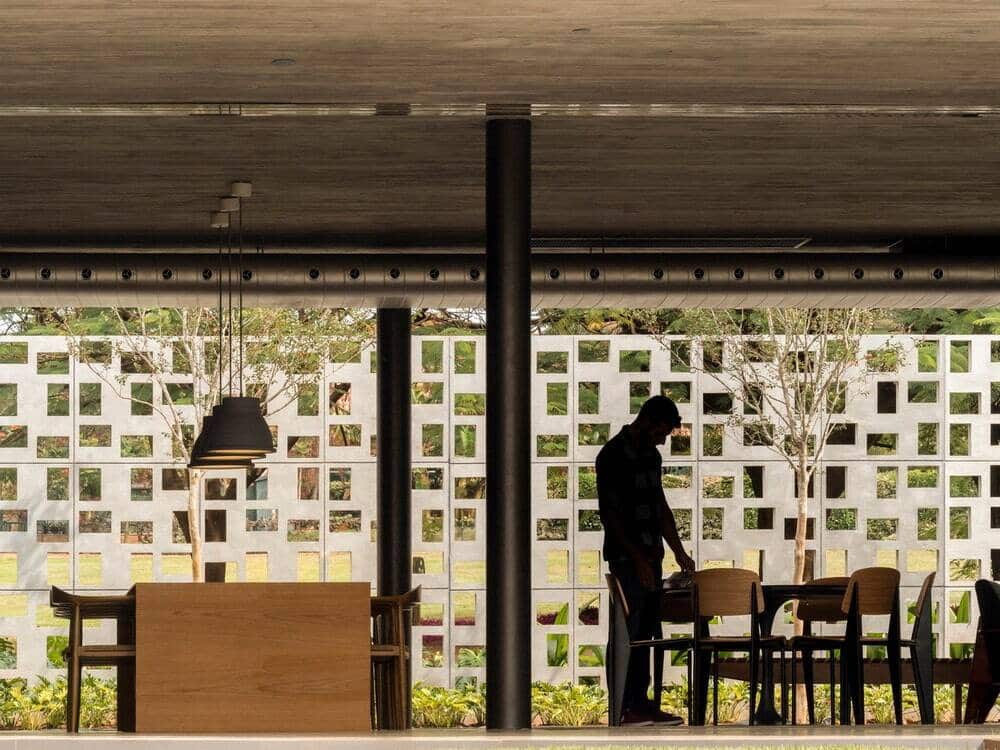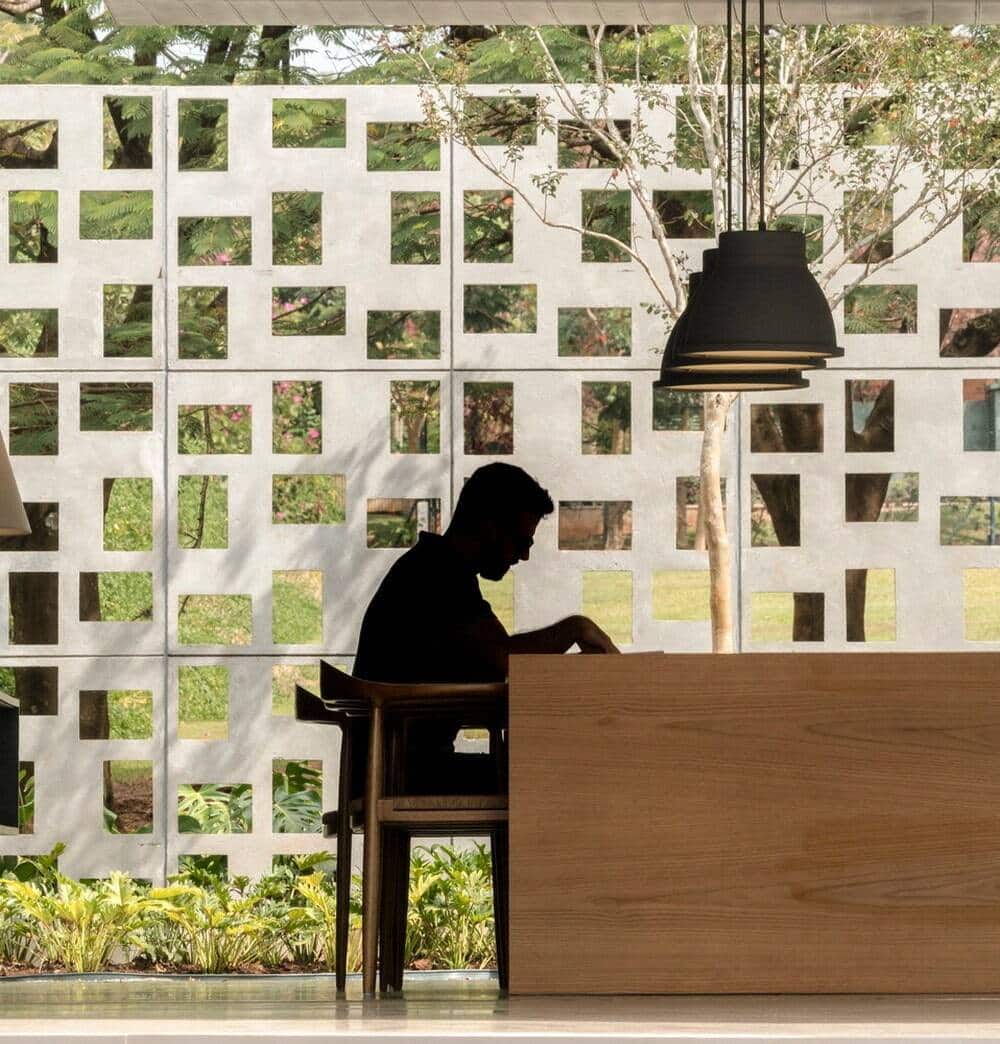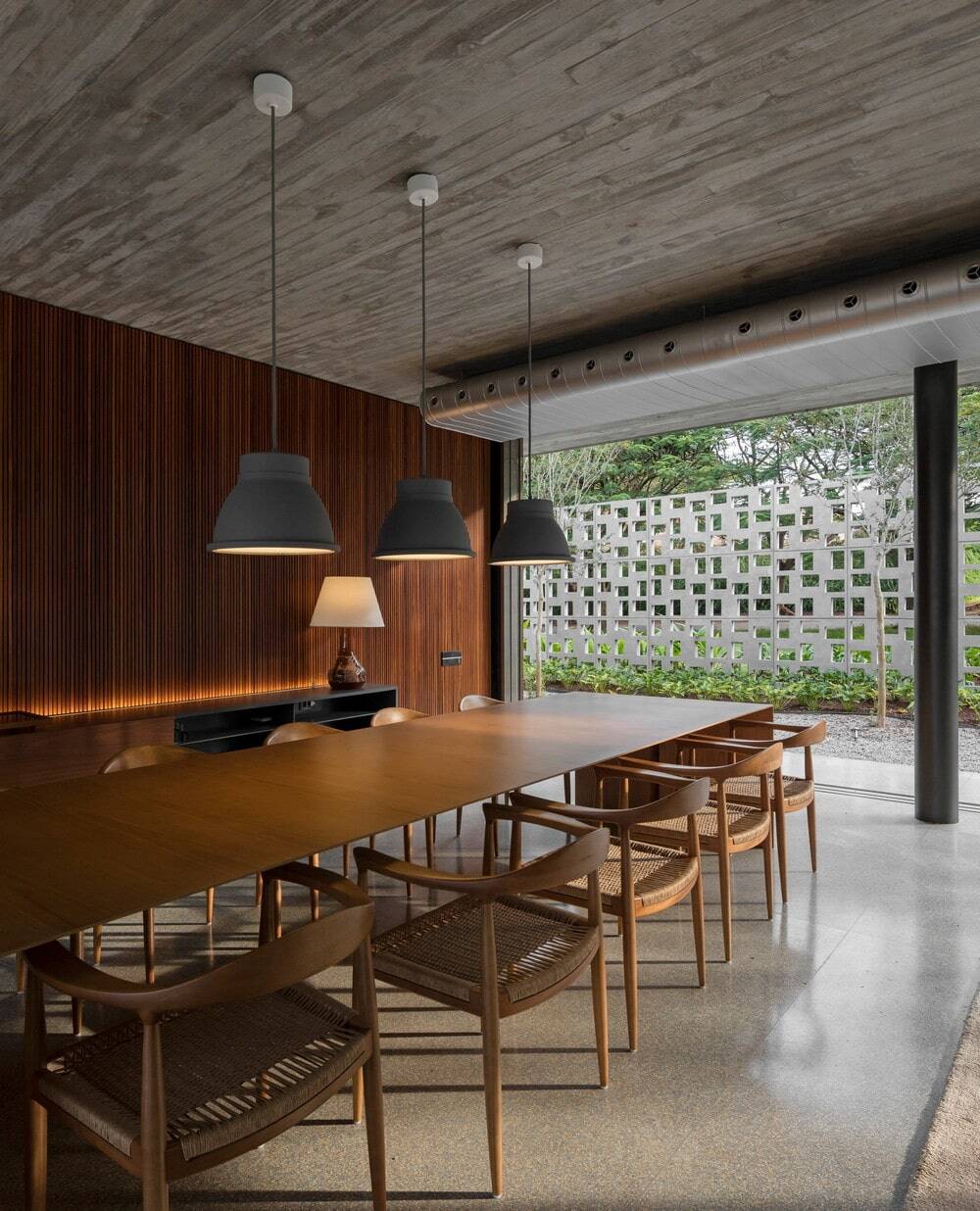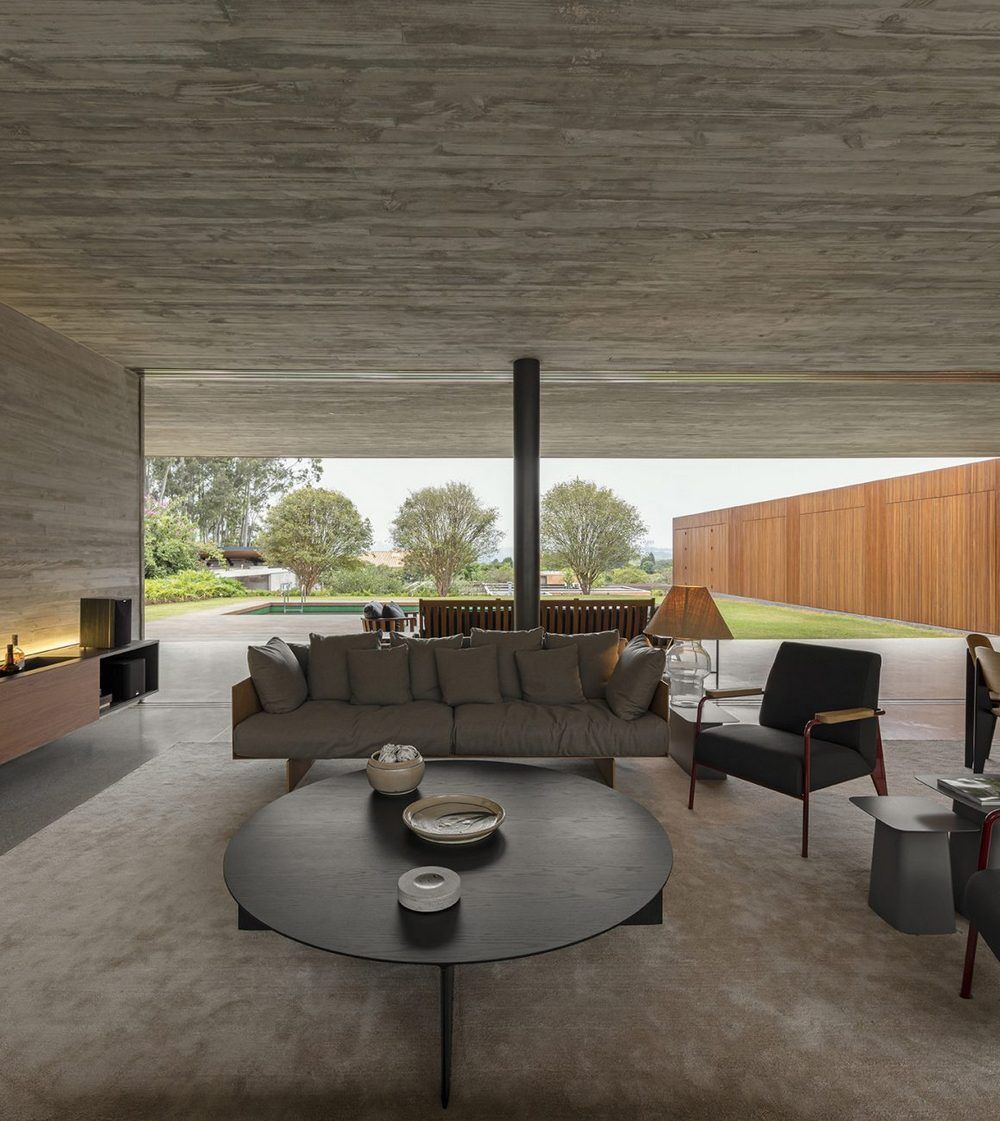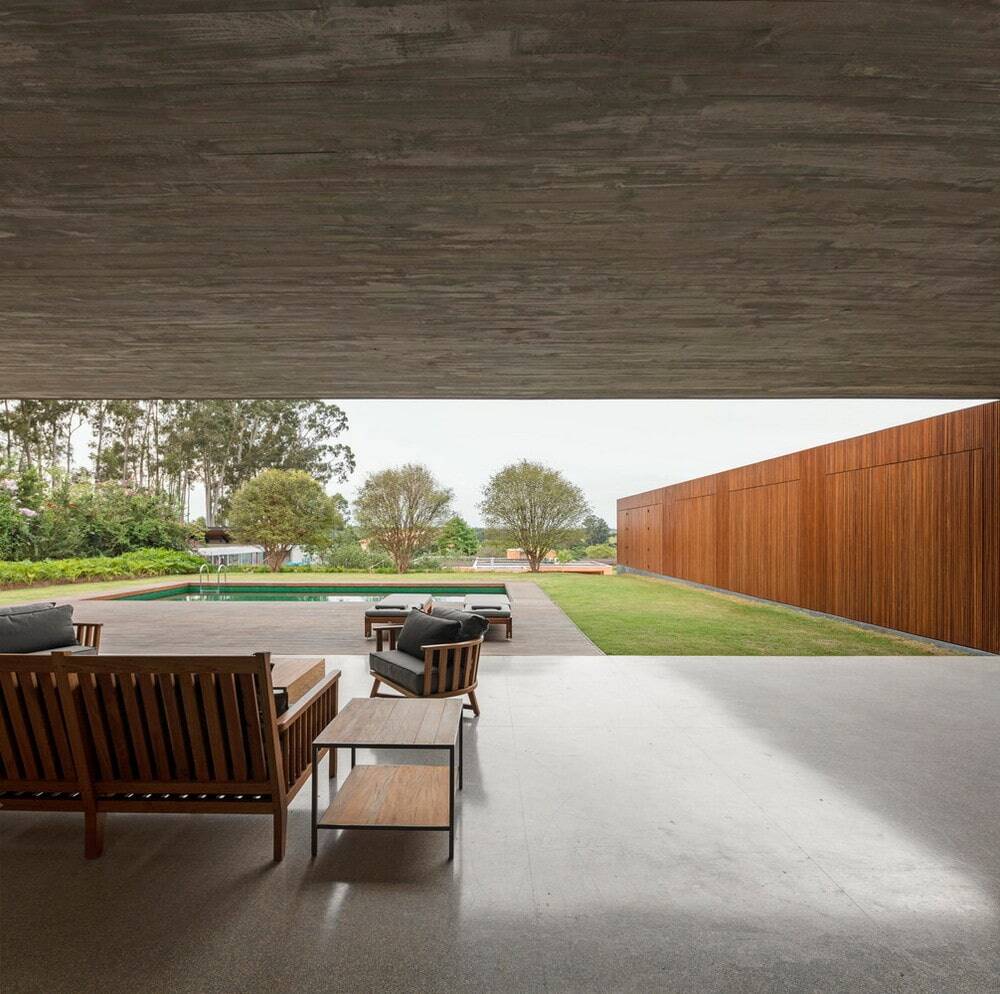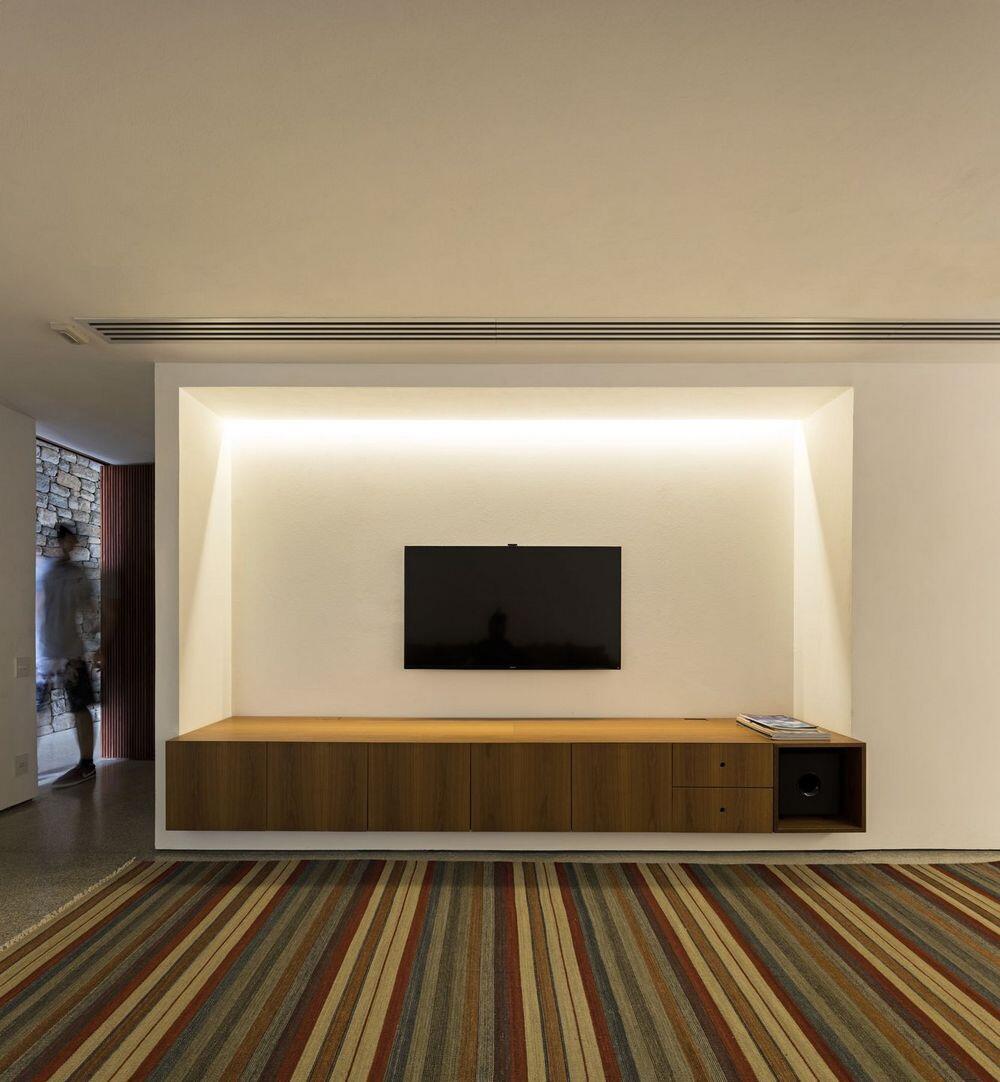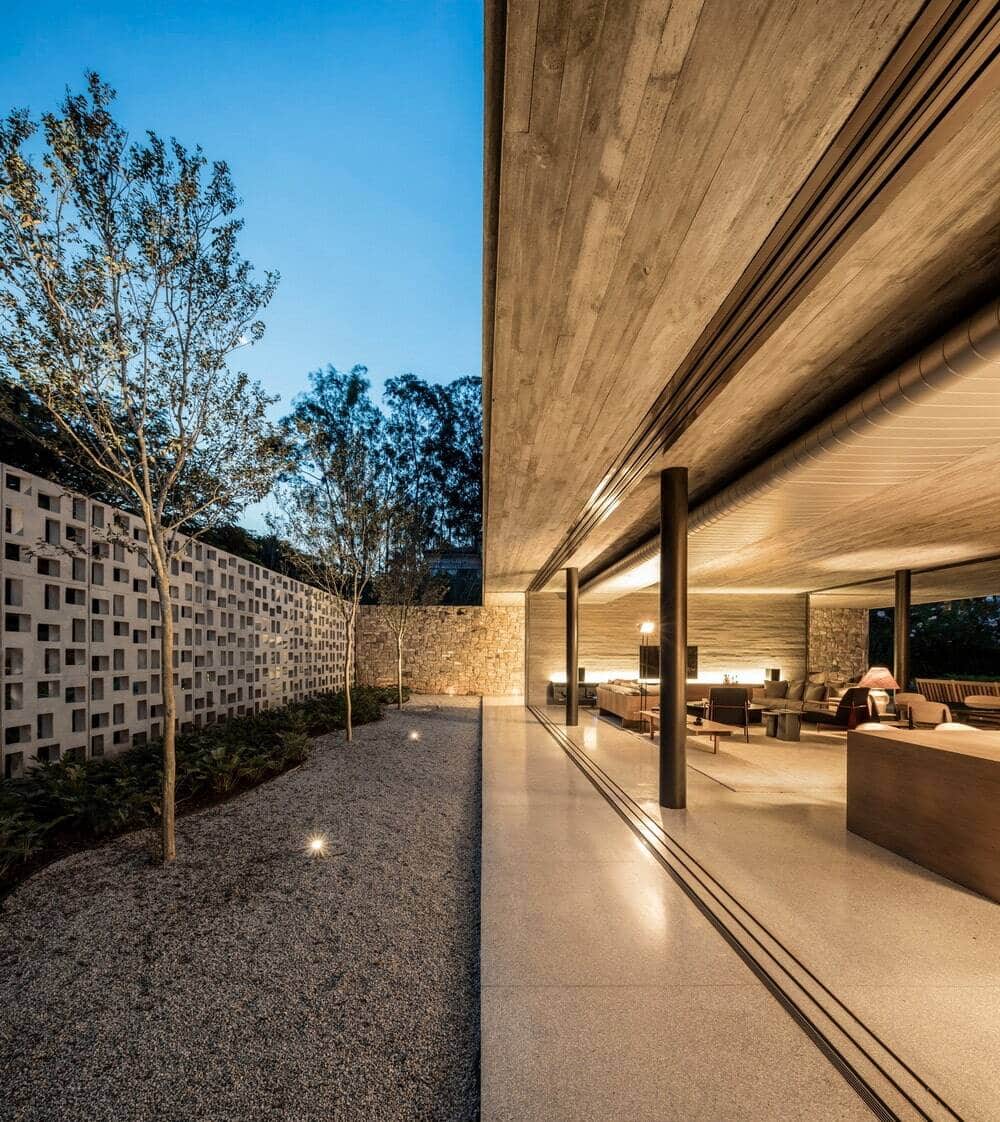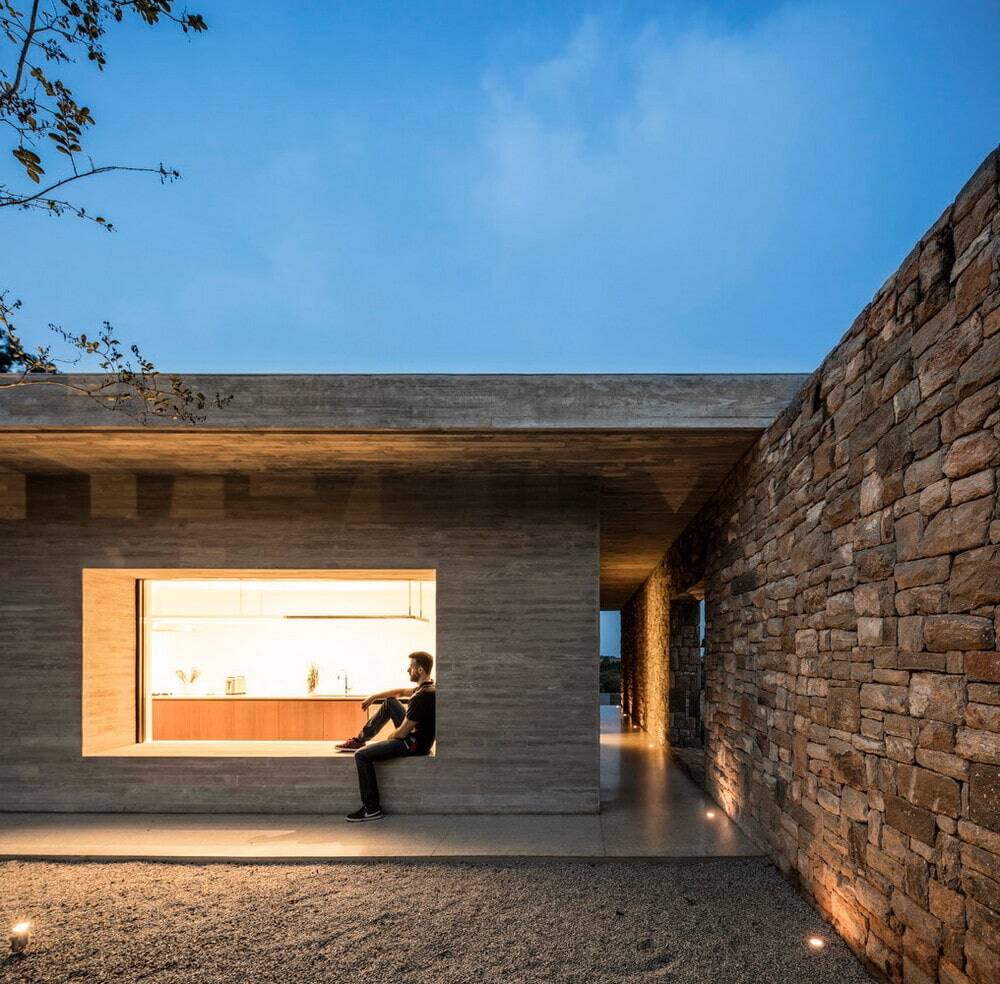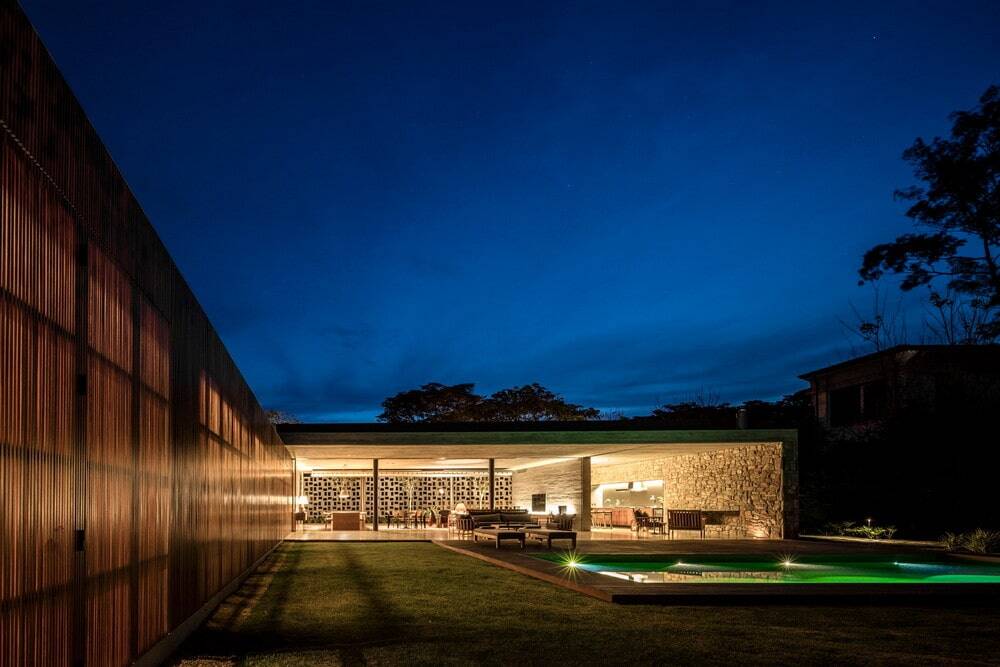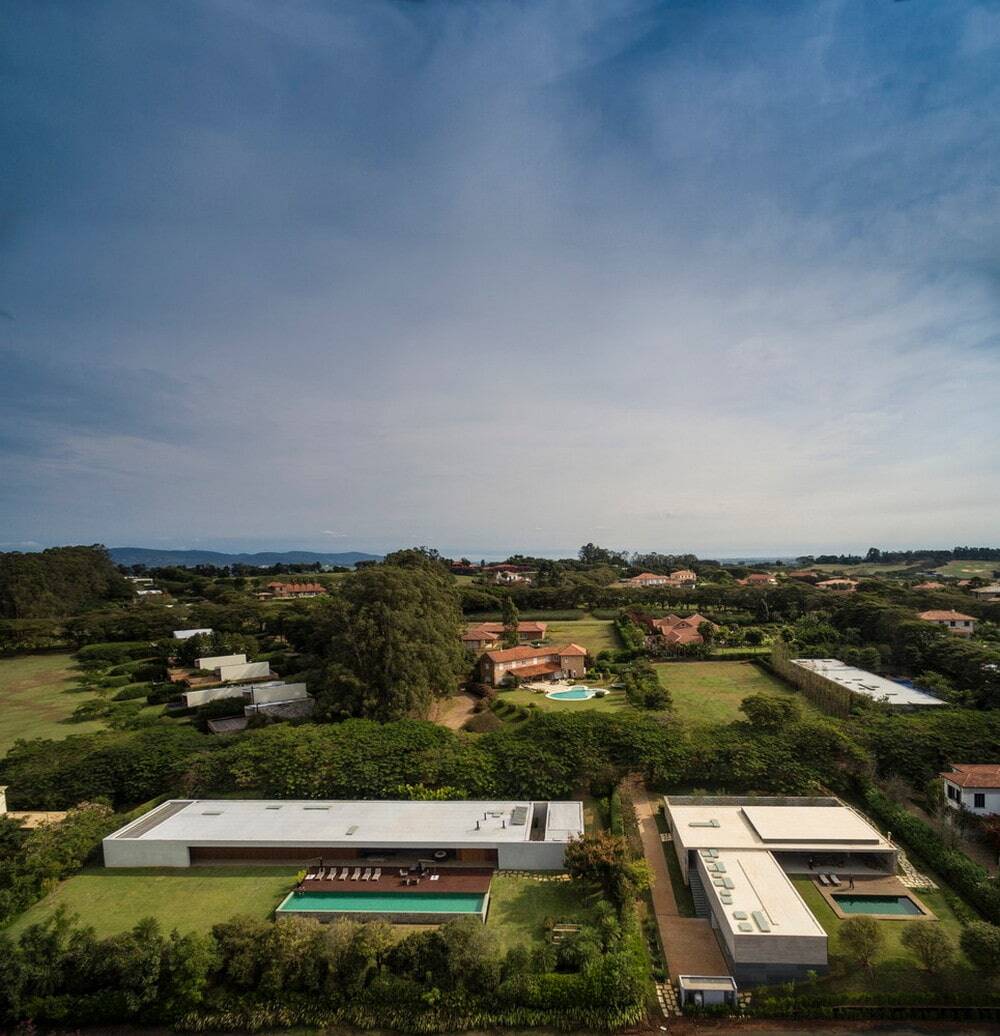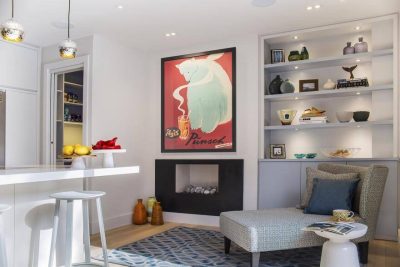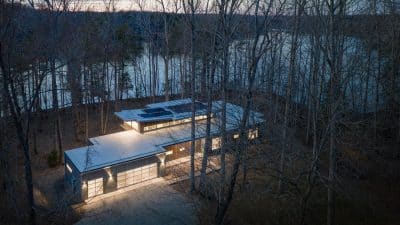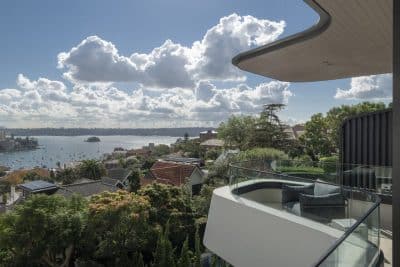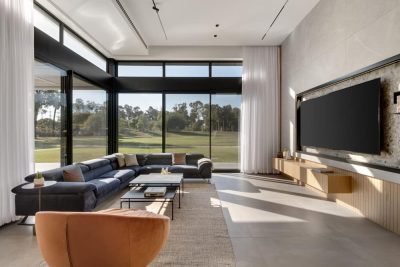Project: Pasqua House
Architecture: Studio MK27
Author: Marcio Kogan
Co Authors: Carolina Castroviejo, Elisa Friedmann
Team: Carlos Costa, Henrique Bustamante, Laura Guedes, Mariana Simas, Oswaldo Pessano, Pedro Ribeiro, Samanta Cafardo
Interior Design: Diana Radomysler
Landscape: Dorey Brasil Paisagismo
Structural Engineering: Pasqua e Graziano Associados – Eng. Luiz Roberto Pasqua
Location: Porto Feliz, Brazil
Area: 572 m2
Photo Credits: Fernando Guerra
The Pasqua House, in Fazenda da Boa Vista, Porto Feliz, has a ground floor plan, in an “L” shape, a totally permeable volume with direct access to the garden.
A leafy boulevard of flamboyant trees (also known as royal poincianas) that seasonally dye one side of the lot with intense red was of great importance to define the architectural design approach. A 27-meter-long hollow brick wall, made of precast concrete panels painted white, delimits this side of the plot and poetically integrates the interior and the exterior.
The concrete hollow brick has become the trademark of this project. At the same time it provides privacy without blocking off the landscape, it brings different emotions throughout the day with the different shapes of light and shadows it creates on the floor as the sun changes direction, and the passing of time is clearly marked by the light that enters with different intensities. The hollow brick wall also creates a subtle relationship between the lot and the street, allowing the users to enjoy the external spaces either from the living room or the internal patio.
Pasqua House has a simple and conventional program organized on a single floor: living room, dining room, toilet, kitchen, four en-suite bedrooms, swimming pool and the garage, which is at the back of the plot, taking advantage of the slope. The three main materials used in the house are concrete, stone and wood. The concrete was used on to the terrace, in the structure and hollow bricks; the stone, original from the area, was used in the two side bearing walls; and the wood, in the brise-soleil that surrounds the bedroom’s block.
The organization of the program happens through a succession of rectangular spaces distributed in an “L” shape. The concrete slab, resting on the stone walls, delimits the social area of house. Here, the visual permeability allows you to see in both directions – towards the front patio and, in the background, towards the pool and garden. The other volume that encounters the slab perpendicularly is lined with wooden panels and delimits the more private area of the house which contains the bedrooms. The pool and the large deck are located in the middle of the lot, facing the two main volumes.
Large glass panels enclose the living room. When closed, they protect the inside of the house from the elements and allow for the use of air conditioning. When opened, the living room becomes a large veranda.
The region where the house is located has high temperatures throughout the year. In order to minimize the need for air conditioning, it was a crucial aspect of the project to guarantee cross-ventilation in the social area. The concrete slab projects itself for four meters from the edge of the living and dining rooms, protecting them from the direct incidence of the sun. The wooden brise-soleil in the bedrooms’ volume protects them from the direct sun and consequently helps with the thermal comfort inside. During the development of this project an unusual partnership took place between the studio and the client.
The experience of the client, who is an excellent structural engineer, was very useful in the planning and construction of the hollow brick wall. Due to its length, it would not stand if it were built with common precast blocks. The contractor suggested the use of a beam on top of the wall but this solution would compromise the elegance of the hollow blocks. It was the client’s knowledge, then, that made viable the pre-casting of self-supporting concrete pieces of approximately 1 x 3 meters, which preserved the subtlety of the design.


